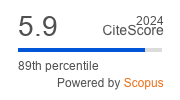Article | Open Access
Political Discourse, Emotions, and Polarization: A Case Study of the President of the Madrid Region
| Views: | 2525 | | | Downloads: | 3072 |
Abstract: In this article, I take a constructionist approach to study the strategic use of emotions as a polarizing tool by the current president of the region of Madrid, Isabel Díaz-Ayuso. Most of the existing discourse studies on emotions focus on their categorization (since Damasio, 1994; Nabi, 2002; Scheibenzuber et al., 2023). However, categories by themselves do not explain why emotions work so well in political and polarizing discourses, which are the main interest of the present study. That is why emotions are here understood as object-oriented mental states that are distinguished between two different types of objects: the deep object (the one perceived by the person constructing the emotion as both valuable and vulnerable) and the shallow object (the one perceived as affecting the deep object). The discourse conveys a relation between them that can be positive (an opportunity) or negative (a threat), triggering positive or negative emotions, respectively. This research shows how analysing emotions as evaluative/cognitive constructions helps us to understand their success in the current political landscape. It also shows that messages about different topics can convey the same emotional structure, being therefore part of the same communicative strategy. I use as a case study the speeches by Díaz-Ayuso at the Assembly of Madrid because she is a very polarizing political figure. I approach it under the hypothesis that her discourses employ a strategy of using emotions for political intentions.
Keywords: discourse analysis; emotions; Madrid; polarization; political discourse
Published:
© Manuel Alcántara-Plá. This is an open access article distributed under the terms of the Creative Commons Attribution 4.0 license (http://creativecommons.org/licenses/by/4.0), which permits any use, distribution, and reproduction of the work without further permission provided the original author(s) and source are credited.


